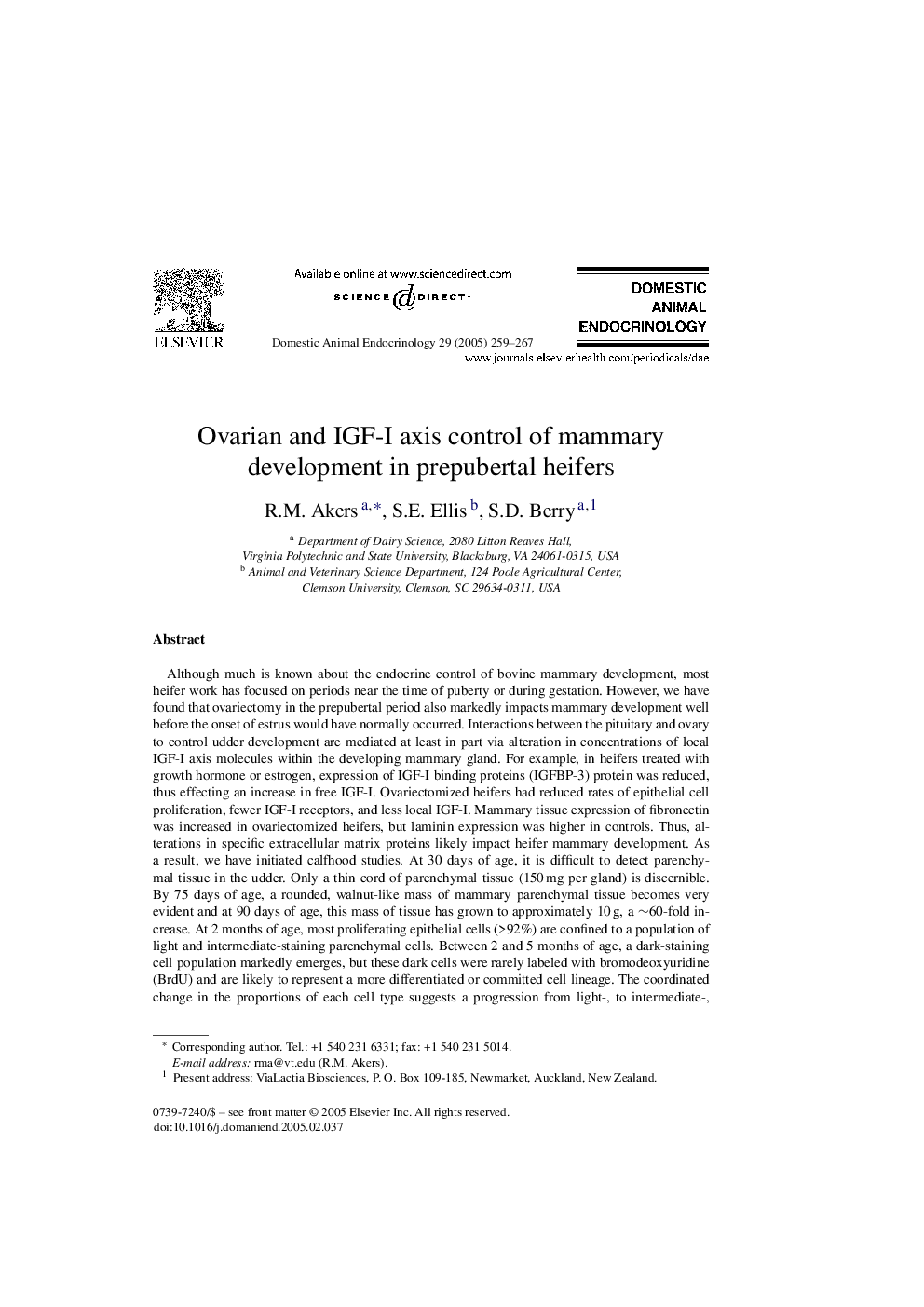| کد مقاله | کد نشریه | سال انتشار | مقاله انگلیسی | نسخه تمام متن |
|---|---|---|---|---|
| 8967165 | 1101394 | 2005 | 9 صفحه PDF | دانلود رایگان |
عنوان انگلیسی مقاله ISI
Ovarian and IGF-I axis control of mammary development in prepubertal heifers
دانلود مقاله + سفارش ترجمه
دانلود مقاله ISI انگلیسی
رایگان برای ایرانیان
کلمات کلیدی
موضوعات مرتبط
علوم زیستی و بیوفناوری
علوم کشاورزی و بیولوژیک
علوم دامی و جانورشناسی
پیش نمایش صفحه اول مقاله

چکیده انگلیسی
Although much is known about the endocrine control of bovine mammary development, most heifer work has focused on periods near the time of puberty or during gestation. However, we have found that ovariectomy in the prepubertal period also markedly impacts mammary development well before the onset of estrus would have normally occurred. Interactions between the pituitary and ovary to control udder development are mediated at least in part via alteration in concentrations of local IGF-I axis molecules within the developing mammary gland. For example, in heifers treated with growth hormone or estrogen, expression of IGF-I binding proteins (IGFBP-3) protein was reduced, thus effecting an increase in free IGF-I. Ovariectomized heifers had reduced rates of epithelial cell proliferation, fewer IGF-I receptors, and less local IGF-I. Mammary tissue expression of fibronectin was increased in ovariectomized heifers, but laminin expression was higher in controls. Thus, alterations in specific extracellular matrix proteins likely impact heifer mammary development. As a result, we have initiated calfhood studies. At 30 days of age, it is difficult to detect parenchymal tissue in the udder. Only a thin cord of parenchymal tissue (150Â mg per gland) is discernible. By 75 days of age, a rounded, walnut-like mass of mammary parenchymal tissue becomes very evident and at 90 days of age, this mass of tissue has grown to approximately 10Â g, a â¼60-fold increase. At 2 months of age, most proliferating epithelial cells (>92%) are confined to a population of light and intermediate-staining parenchymal cells. Between 2 and 5 months of age, a dark-staining cell population markedly emerges, but these dark cells were rarely labeled with bromodeoxyuridine (BrdU) and are likely to represent a more differentiated or committed cell lineage. The coordinated change in the proportions of each cell type suggests a progression from light-, to intermediate-, to dark-staining cell phenotypes. We are currently focusing on the importance of the ovary and mammary tissue synthesis of estrogens on emergence of specific populations of putative mammary stem cells.
ناشر
Database: Elsevier - ScienceDirect (ساینس دایرکت)
Journal: Domestic Animal Endocrinology - Volume 29, Issue 2, August 2005, Pages 259-267
Journal: Domestic Animal Endocrinology - Volume 29, Issue 2, August 2005, Pages 259-267
نویسندگان
R.M. Akers, S.E. Ellis, S.D. Berry,